Inizio modulo
Fine modulo
Whangape Colossus New Zealand
PALEOLITHIC ART MAGAZINE
OCEANIA
THE WHANGAPE COLOSSUS OF THE NEW ZEALAND ATTRIBUTED TO THE UPPER PALEOLITHIC
Pietro Gaietto
Editor of the website of the Museum of the Origins of Man
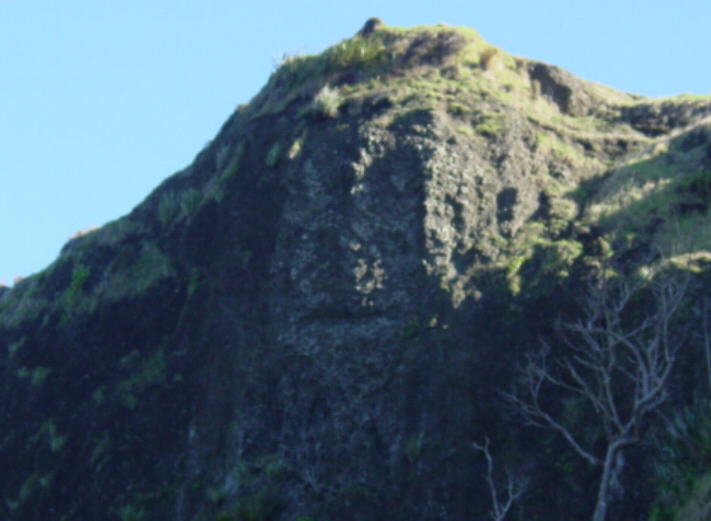
The WHANGAPE COLOSSUS is the representation of a human face 7 meters tall.
Photo: R.Buchanan
It is one of the wonders of the prehistoric art, like the Colossus of Borzone (Italy), like the Cave of Altamira (Spain), like the Cave of Lascaux (France).
This gigantic rock sculpture would have to be considered patrimony of the humanity.
Forward
Historical outline
Current scenary
Art and religion
Paleoarteology
Illustrations with figure captions
Description of the Whangape Colossus
Difficulties in interpretation
Conclusion
FORWARD
The first discovery of paintings of the upper Paleolithic was made by a 12 y.o. girl, daughter of Marcelino de Santuola, who had begun excavating the Magdalenian deposit of Altamira cave, in Spain. In the summer of 1879, four years after the beginning of the work, the little Maria, which his father had first brought with him, called his attention to the animals painted on the vault of the cave just above the entrenchment.
An analogous case has repeated in August, 1999, when Robert Buchanan has taken his daughter Lyril, 8 y.o. with himself in a small boat fishing in the Whangape Harbour, adjacent to a protected coastal forest, in the Far North of New Zealand, 250 kilometres north of Auckland.
Was the little girl to see and to indicate to the father the "Face of Whangape".
With the little Lyril a case of "history " of the" prehistory " was repeated.
Robert Buchanan has immediately mobilized himself in order to inform and to have scientific informations, that in substance were synthesized in the question to the experts, if this could be, or not be, the image of a face produced by man, that is if it was a work of art.
After inquiring with expert archaeologists, he was told that the image is not produced by natural erosion, but is a human product.
Notice that:
1) For colossus it is meant every anthropomorphic or zoomorphic sculpture larger than the real one..
2) The Whangape Colossus is one of the two prehistoric anthropomorphic sculptures biggest of the world, with the Colossus of Borzone (Italy); their faces measure seven meters of height.
3) I think that the Whangape Colossus is more ancient of the more ancient paintings existing in Australia.
HISTORICAL OUTLINE
The prehistoric sciences were born in North-western Europe approximately 130 years ago. Until 50 years ago it was believed that the prehistoric man, and his civilization, was born in Europe, also because the greater part of the art and human fossil discoveries had been found in Europe. From 50 years until today, with the discoveries of human fossil in austral and southern Africa, dated until 2,500,000 years, the birth-place of the humanity has been moved from Europe to Africa.
In the last few decades have been discovered paintings of the upper Paleolithic in Australia and southern Africa, thought more ancient than the Europeans ones.
Previously, people thought that, to the end of the last glaciation, the man of the upper Paleolithic, who painted animals in the Caves, had abandoned the Europe in order to chase the herds of mammals of which he was fed, before migrating to North, and then towards others parts of the world.
CURRENT SCENARY
About the birth-place of the art painted on surface of the upper Paleolithic (improperly said Rock Art) we do not know nothing. We do not know if the birth-place is Europe, Oceania or Africa.
About the datings of the paintings in Cave or under rock, currently, there is a swing of dates between Europe, Oceania and Africa, which do not constitute reliable evidence, regarding the fact that in one of the three continents was born first this type of artistic civilization, and then migrated to the other two .
Different is the discourse on sculpture
We know that in the lower and middle Paleolithic the man produced lithic sculptures, and not painting, therefore the sculpture precedes the painting, whicht then continues in the upper Paleolithic in parallel to the painting, until our days, but near different civilizations.
In Europe, like in Oceania and Africa, in the upper Paleolithic, there are different types of civilization, of which the two main ones have as theyr artistic applications, the one the sculpture, and the other the painting.
In the upper Paleolithic, that is beginning from approximately 40,000 years ago, for the sculpture there are the same uncertainties that exist for the painting, that is we know where it is found, but we do not know where it is born, in how much the people always have migrated.
ART AND RELIGION
In the upper Paleolithic, like in all the prehistory, the art was produced exclusively for cult rituals, that is for the religion.
Any shape of art represents subjects connected to the religion, therefore, the various types of art correspond to different religions.
As an example, the paintings of the Caves of Altamira (Spain), and Lascaux (France) represent animals of many types, and in various attitudes, and the scholars of it have given many interpretations; the most shared connects them to "magical rituals". In the sculpture we have little testimonies, in that many have been destroyed, so parallels must be drawn with the Mesolithic, the Neolithic, the historical periods and the ethnography. The anthropomorphic sculptures, that are repeated always the same, are considered "divinities", that is connectable to rituals of "idolatry". Example of repetition of the same type are the statues of the Easter Island.
The diversity between civilization with painting and without sculpture (magical rituals) and civilization with sculpture and without painting (idolatry) is one of the fundamental aspects in order to study the art of the upper Paleolithic.
PALEOARTEOLOGY
The Paleoarteology is the science of the prehistoric art, and the Whangape Colossus is studied with the methods of this science.
In the terminology of the paleoarteology, this gigantic head is defined rock sculpture, and it does not be confused with the "Rock Art", that is a not scientific and vague definition, in how much it refers both to cave paintings or in under rock shelters, and to graffiti on mountain cliffs.
The paleoarteology abolishes the old concept of "concomitance", that is the production of two similar types of art works invented in two or three different continents, although it admits evolution and transformation from a common strain.
The transformation of the subjects of the art works concerns the transformation of the religion, in how much, if the religion changes, changes in all or in part the represented subject.
The transformation, moreover, is present in the style, i.e.in the language of art, leaving the depicted subject unchanged; for example, the human head, which, from a realistic style, assumes a geometric style.
The evolution of the sculpture, in a civilization, and obviously in long times, concerns the composition of the work and the working technique, in how much the art work becomes more beautiful of the previous works
ILLUSTRATIONS WITH FIGURE CAPTIONS

FIG. 1 The Whangape Colossus, rock sculpture.
It represents a human head ( see photos black and white Fig.6 and 7).
Size of the head:.7 mt height .
Location: Whangape, Hokianga, New Zealand.
Material culture: Upper paleolithic.
Photo: R. Buchanan
In New Zealand it has been named the "Whangape Face". I prefer the word Colossus, as it fully deserves it, if we compare it with the bronze colossuses of the Greeks and Romans, which were up to 30 meters high, but their heads were smaller than that of the Colossus of Whangape.
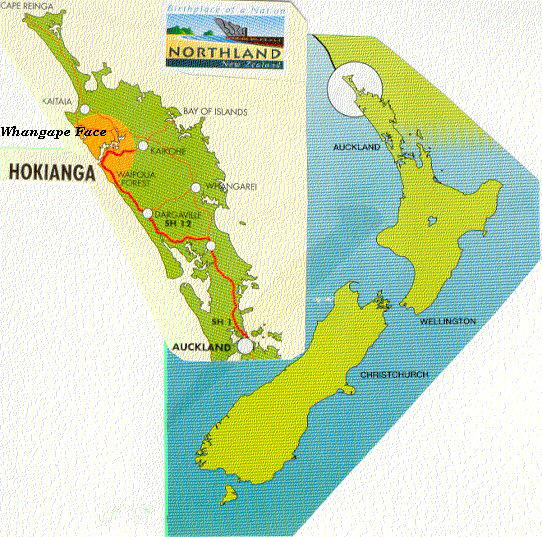
FIG. 2 Geographic map of New Zealand with indication of the locality in which the Whangape Colossus is situated.
Photo: R. Buchanan
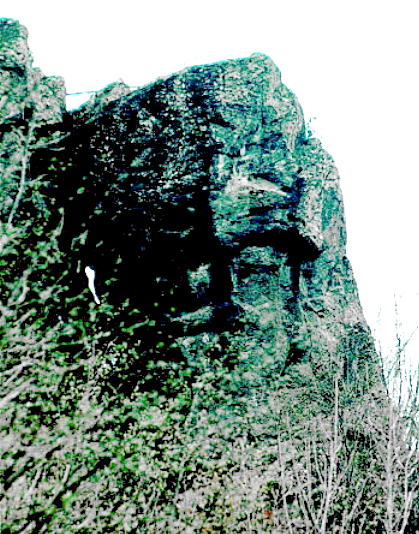
FIG. 3 The Colossus of Borzone, rock sculpture.
It represents a human face.
Size of the face: 7 mt. height.
Location: Borzonasca, Genoa, Italy, Europe.
Material culture: upper Paleolithic.
Photo: P. Gaietto
A study on this sculpture is published on this review: "The megalithic face of Borzone", P. Gaietto, 2000.
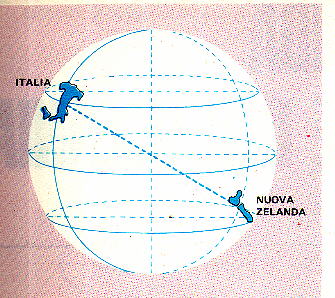
FIG. 4 Italy and New Zealand are exactly to the antipodes, that is in the diametrically opposite point with respect to the center of the Earth. (From "Itinerari esplorativi", G.Righini Ricci, Signorelli Publisher, Milan, 1975).
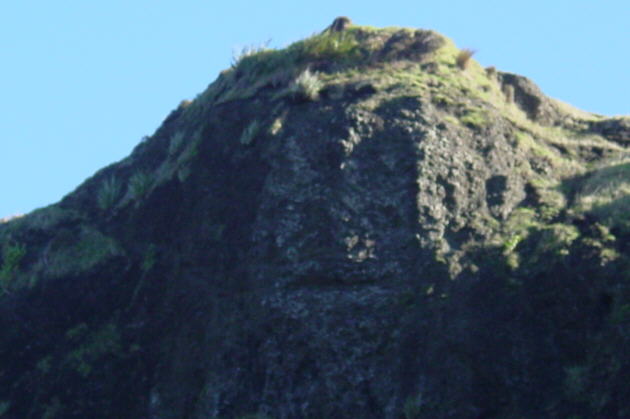
FIG. 5 The Whangape Colossus, rock sculpture.
Photography similar to the Fig. 1, but with different brightness.
Photo: R. Buchanan
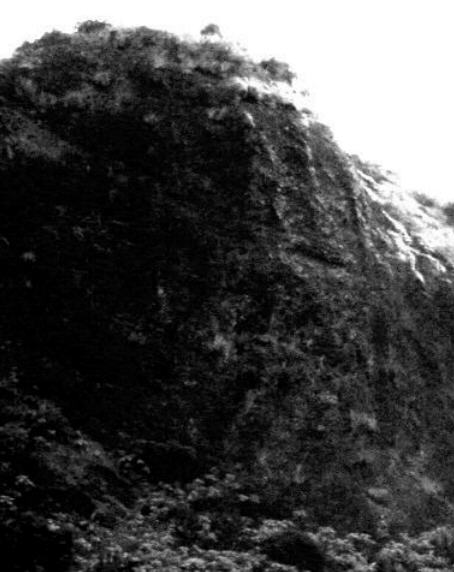
FIG. 6 The Whangape Colossus, rock sculpture.
Photo devoid of color, in order to emphasize the image from the vegetation.
Photo: R. Buchanan.
Photo devoid of color: L.Filingeri
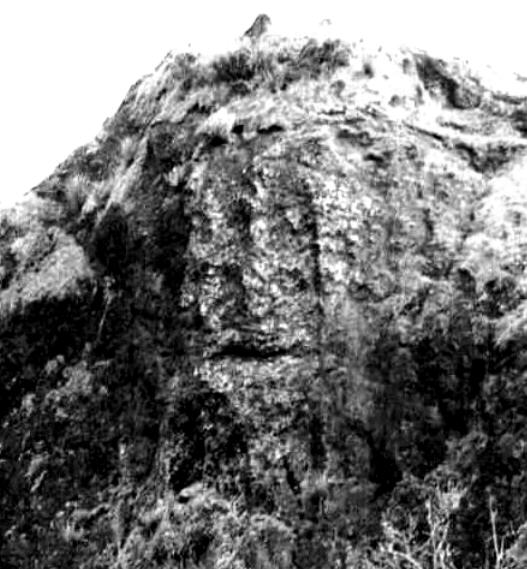
FIG. 7 The Whangape Colossus, rock sculpture.
Photo devoid of color, in order to emphasize the image from the vegetation.
In this photo we can see better the orbital zone, and the right eye seems to have a little relief in the center.
Photo: R. Buchanan.
Photo devoid of color: L.Filingeri
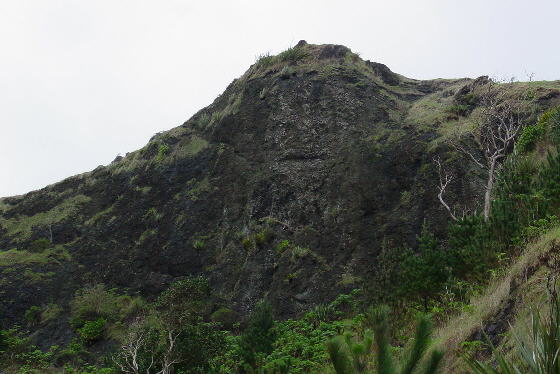
FIG. 8 The Whangape Colossus, rock sculpture.
Photo: R. Buchanan.
Photography in frontal view, similar to Fig. 1 and Fig. 5, but taken with a wider view of the surroundings, i.e. as seen from a distance.

FIG. 9 The Whangape Colossus, rock sculpture.
Photo: R. Buchanan.
Lateral view of the head. This curve must be imagined together with the re-entering face, but projected in ahead, to get the idea of the wonderful grandeur of the Colossus.

FIG.10 The Whangape Colossus, rock sculpture.
Nearly semifrontal photography, view from the left.
Photo: R. Buchanan.

FIG. 11 Venus of Laussel. It represents a nude woman with a horn in a hand. The face, or perhaps the hair no longer exists, in how much has been destroyed. Often the feminine images do not have the face.
Size:. 43 cm height.
Origin: Laussel, France.
Material culture: Upper Paleolithic
Photo: Musée d' Aquitaine, Bordeaux, France.
This sculpture in bas-relief here is introduced (like described in the text) in order to testify that in the human representations, beyond to the single head, was represented also the head with the body, and objects in hand.
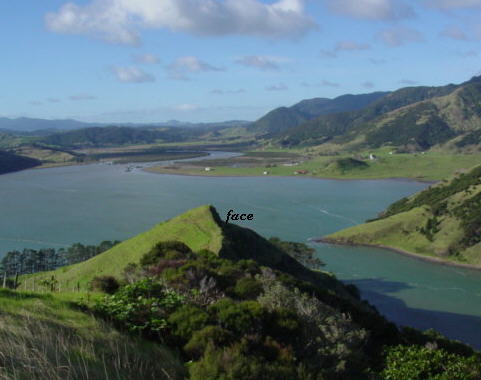
FIG.12 View of the rock hill on which is sculpted the Whangape Colossus.
Photo: R. Buchanan.
DESCRIPTION OF THE WHANGAPE COLOSSUS
The archaeology embraces, with its many disciplines, an immense field of studies.
There are finds, that the archaeologist of any discipline sees immediately; for example a pottery shard, a polished axe, the fragment of a bronze statue, the color of a painting in a cave.For these findings the attribution of human workmanship is immediate, but the interpretation is a very different thing, and here we need the specialization.
The lithic sculpture of the lower and middle Paleolithic, and the rock lithic sculpture of the upper Paleolithic, like the Whangape Colossus, difficultly are individuable and interpretable by archaeologists of every discipline, in how much are not still matter of teaching at the University, and moreover, they can be considered much rare, in comparison with the paintings of the upper Paleolithic, and the paintings and the rock graffiti of the following ages, that all can recognize immediately.
The Whangape Colossus represents a human face in frontal view.
It is a rock sculpture obtained at the apex of a rock hill, and its "look" is oriented towards the sea, currently a "harbour for boats".
This face is high approximately 7 meters.
The type of rock is a volcanic conglomerate. The sculpted surface is covered from lichens, and, therefore, some parts in photography are looked at less well.
The typology of the sculpture is a mix between the bas-relief and the sculpture all round. In photography are showed the frontal view and the lateral view.
The frontal view (Fig. 1, 5, 8) is integrated from two photos that have been color avoid (Fig.6 and 7) ( in which is better emphasized the working of the stone). on which I define the description, that, however, the reader must control in the colored photographies.
Following the photos Fig.6 and 7: the edge of the face with the beard and the nose are in relief compared to the inner part. The lateral edges (right and left), and some part of the nose, and the beard, have some trace of natural erosion, and this is normal in a rock of volcanic conglomerate. The mouth is ulteriorly hollowed in the inner part. The lateral profile of the sculpture (Fig. 9), instead, follows the anatomy of a natural head, that is, is not of type stylisticlly nearly squared like the frontal view.
The rhythms of the representation of this "human face" are composed from five different removals of the rock:
Curvature of the side profile, but that may have already been present in part.
2) Levelling of the face.
3) Relief of the external contour.
4) Lowering of the inner part.
5) Mouth recess.
There are no eyes, and are replaced from a generic orbital zone. It is possible that there was some sign much more, but that the natural erosion has cancelled it.
The stylistic language of this representation is vaguely geometric, and this stylistic deformation of the real can be seen not only from the external shape of the face, from the shape of the elongated nose, from the positioning of the eyes (orbital area), but also from the beard.
I remember that the stylistic deformation of the depicted image is not due to inexperience of the artist, as was believed a hundred or two hundred years ago, but is due to the fashion of a civilization and of a certain period, that is the language of art.
This has been a fortunate and accidental discovery; at the moment it is unique, but it is probable that in New Zealand other colossuses of this type exist. It is auspiciable that some searches will be made; however, between the difficulties (what happens also in Europe), not are only the absence or scarcity of archaeologists interested in this search, but also the vegetation, that often hides or covers the great paleolithic sculptures, and moreover, their distance from the roads, what happens, as an example, in Italy in the mount zones where not there is agriculture.
A rock sculpture of same dimensions of the Whangape Colossus is the Colossus of Borzone (Italy), called the "Megalitic Face of Borzone "( the word "megalithic"is improper, in how much refers to great stones, while this is a sculpture obtained in the solid mountain rock).
The Colossus of Borzone (Fig. 3) is constituted from a human face 7 meters tall (see in this magazine: "The megalithic face of Borzone", P.Gaietto, 2000).
The affinities between the two colossuses, in spite of the great distance that separates them (Fig. 4), are constituted from the same size of the face, and from the face realized in frontal sight, this must be noticed in how much the greater part of the European colossuses, representing the human head, have semifrontal configuration, or they represent half head, for which it is evidenced only the profile, and therefore they have an only eye
(see THE HUMAN HEAD IN PALEOLITHIC SCULPTURE).
In the prehistory the art was produced for cult rituals, that is for the religion; like as the lithic tools were produced in order to quarter animals, cut the skins to make tents or dress, etc.
In the case of the Whangape Colossus it is necessary to make a parallelism with the interpretations of the European giants of the upper Paleolithic, that is representation of a divinity, whose ritual of cult more reliable is the idolatry.
DIFFICULTIES OF INTERPRETATION
The study on the Whangape Colossus is drawn from the photographies and the descriptions that I have had via e-mail by Robert Buchanan.
I have not seen the Colossus from real , but I am convinced that the documentation I had was equivalent to my visit to New Zealand.
Mr. Robert Buchanan adds that some persons have seen, under the head, "the thorax, the legs and the arms, of which the right arm, rested on the abdomen, holds something in hand".
In consideration that Mr. Robert Buchanan has not seen the body joined to the sculpted face, it can be imagined that these persons have had too much fantasy, much more than, from the photographies, the possible zone of the body is covered from vegetation, and nothing is not looked at.
However, admitted that these persons have seen well, exist in the upper Paleolithic some sculptures which represent the man complete of body, even if they are of modest dimensions, like the Venus of Laussel, that is. 43 cm high ( Fig. 11 ), that, moreover, holds an object with a hand.
Personally, I do not think that, in the Whangape Colossus, the face has also a body, probably will be some natural erosion, but if effectively it had the body or also a part of the body, its cultural attribution, that is its collocation, would no more be at the beginning of the upper Paleolithic, but would be more recent, except the circumstance that, in New Zealand, the sculpture was more progressed that in Europe. This can be ascertained with new findings.
The fact that, in New Zealand, after the Whangape Colossus, in the post-paleolithic ages, has not been a prosecution of the great anthropomorphic sculpture, does not have much importance, in how much the same has happened also in Europe.
The great historical civilizations, in fact, are not been born in Europe, but in the near Middle East; but these civilizations have been produced from peoples that had mostly sculpture, and their deities were all represented in sculpture, while the painting was used only for decoration..
CONCLUSION
We do not know which people have made he Whangape Colossus t, and not even, to my knowledge, lithic tools of the upper Paleolithic have been found.
In Europe the lithic tools are different in the peoples with anthropomorphic sculpture and without painting, from those of the peoples with zoomorphic painting and without sculpture.
These different peoples of the upper Paleolithic have lived contemporarily in different territories.
This has happened also in Oceania; in New Zealand has been a people who has produced this rock sculpture and has not produced painting; and in Australia has been a people who has produced painting and not produced sculpture.
The problem of the peopling of the New Zealand and Australia is still to resolve, and concerns the paleoanthropology, the palethnology and the paleoarteology, therefore, for the moment. it does not interest directly the Colossus of Whangape..
I affirm that this colossus of the New Zealand is more ancient of the more ancient paintings of Australia. I do not have absolute datings, neither would be possible to date a rock sculpture with the current dating systems.
I put on the same level Oceania and Europe, where in the upper Paleolithic has been produced first the anthropomorphic lithic sculpture, and after the zoomorphic painting. Undoubtedly, the objections to my theory can be many, but I hope that there will be a constructive criticism, however welcome.
In Europe many menhir, and prehistoric anthropomorphic menhir, are remained in the pagan cult until 300 years ago, when the Church, with the christianization of the zones in which they are placed, has decided to put a cross over, at least on some of them.
The same Colossus of Borzone (Fig. 3), discovered in 1965, during the construction of a mountain road, also going back to the upper Paleolithic, is remained in the cult of the pagan valley dwellers of Borzone until recent times, in how much during the process of christianization of the zone, always approximately 300 years ago, a legend defines it as the "Face of Christ".
The divinity in sculpture, evidently, has a much greater duration than the paintings produced for "magic rituals".
It is auspicious that the Colossus of Whangape initiates the search of the rock sculptures in New Zealand.
Genova, 2002, August 7
Index
HOME PAGE
Copyright©2000-2002 by Paleolithic Art Magazine, all rights reserved.













